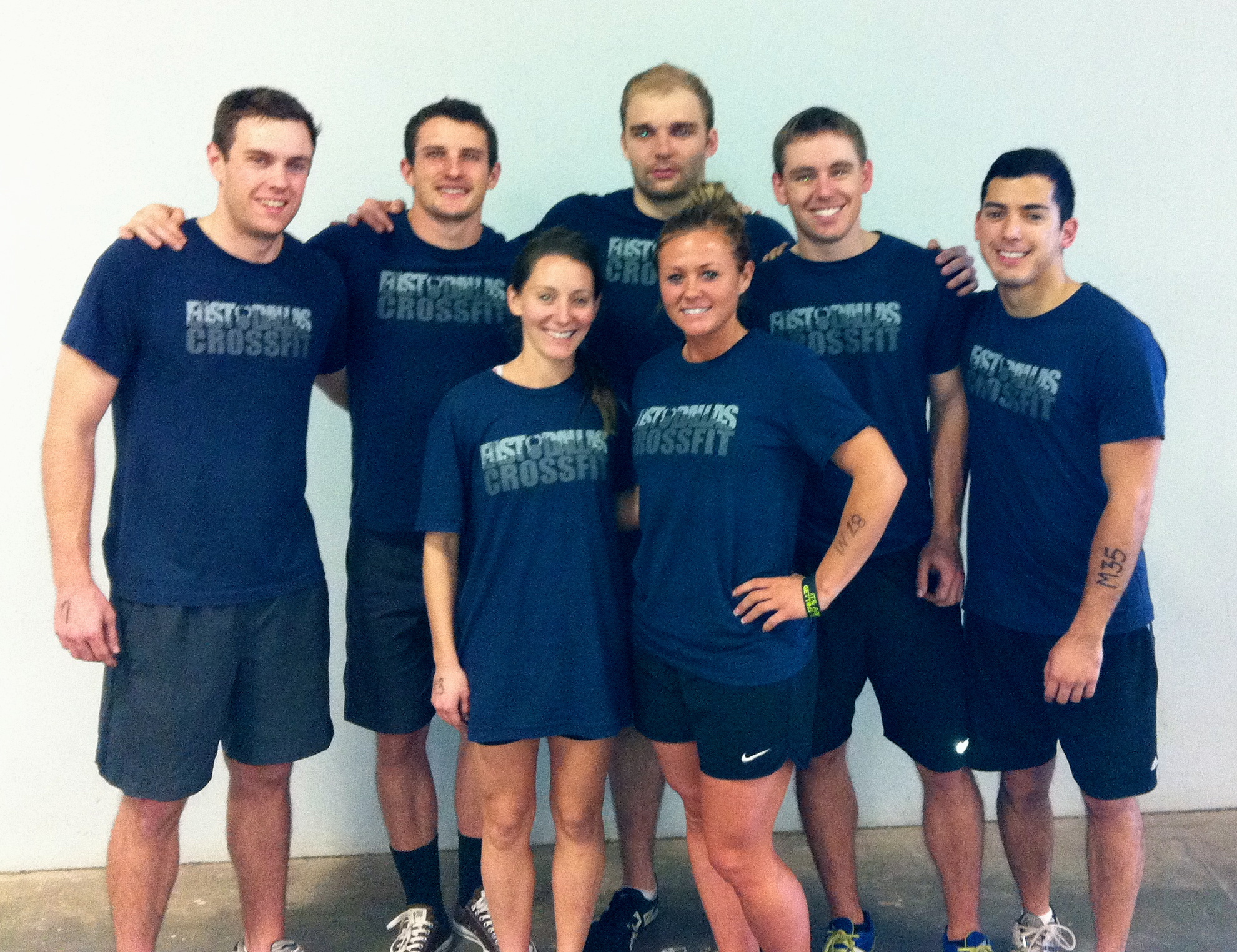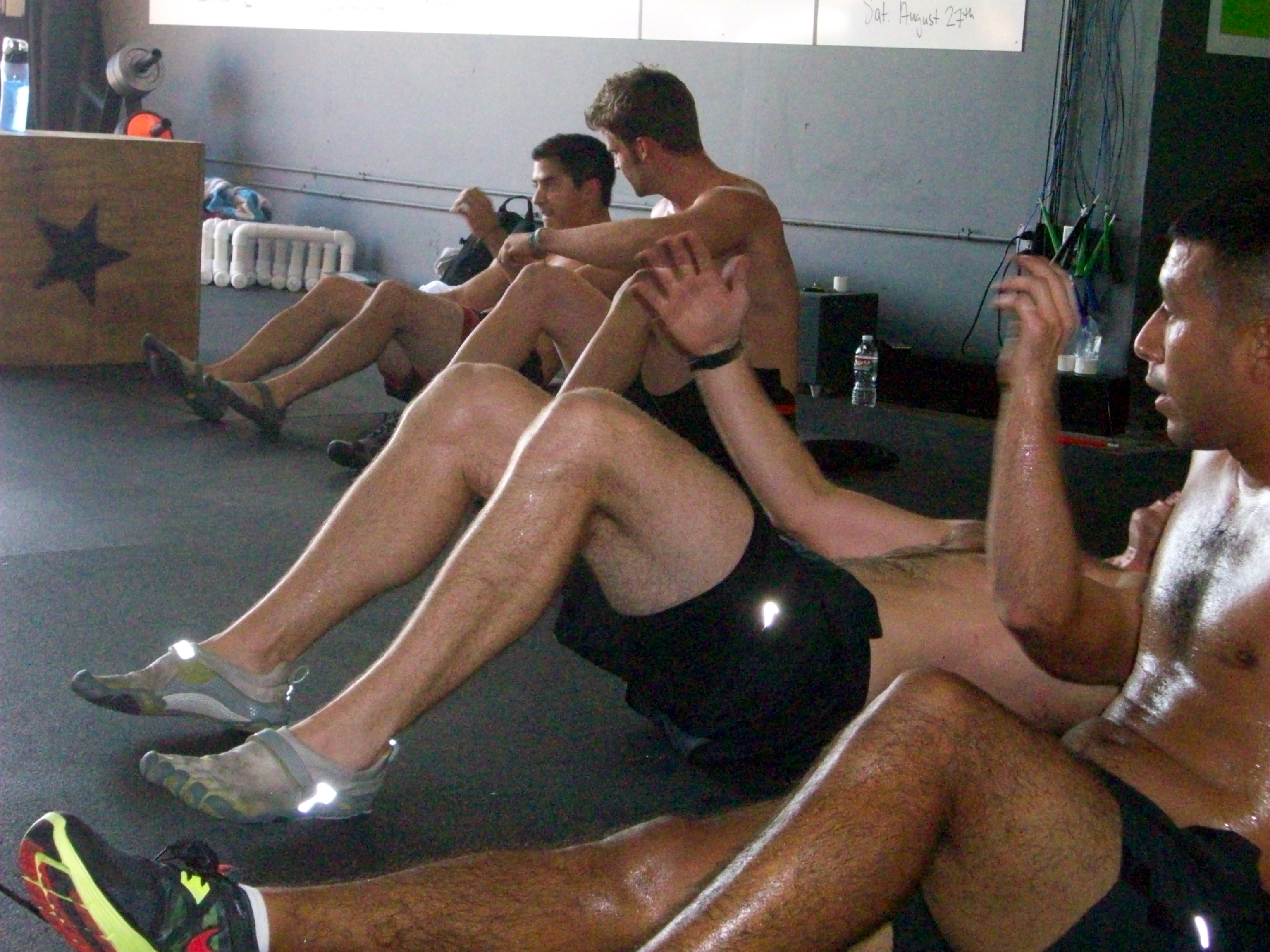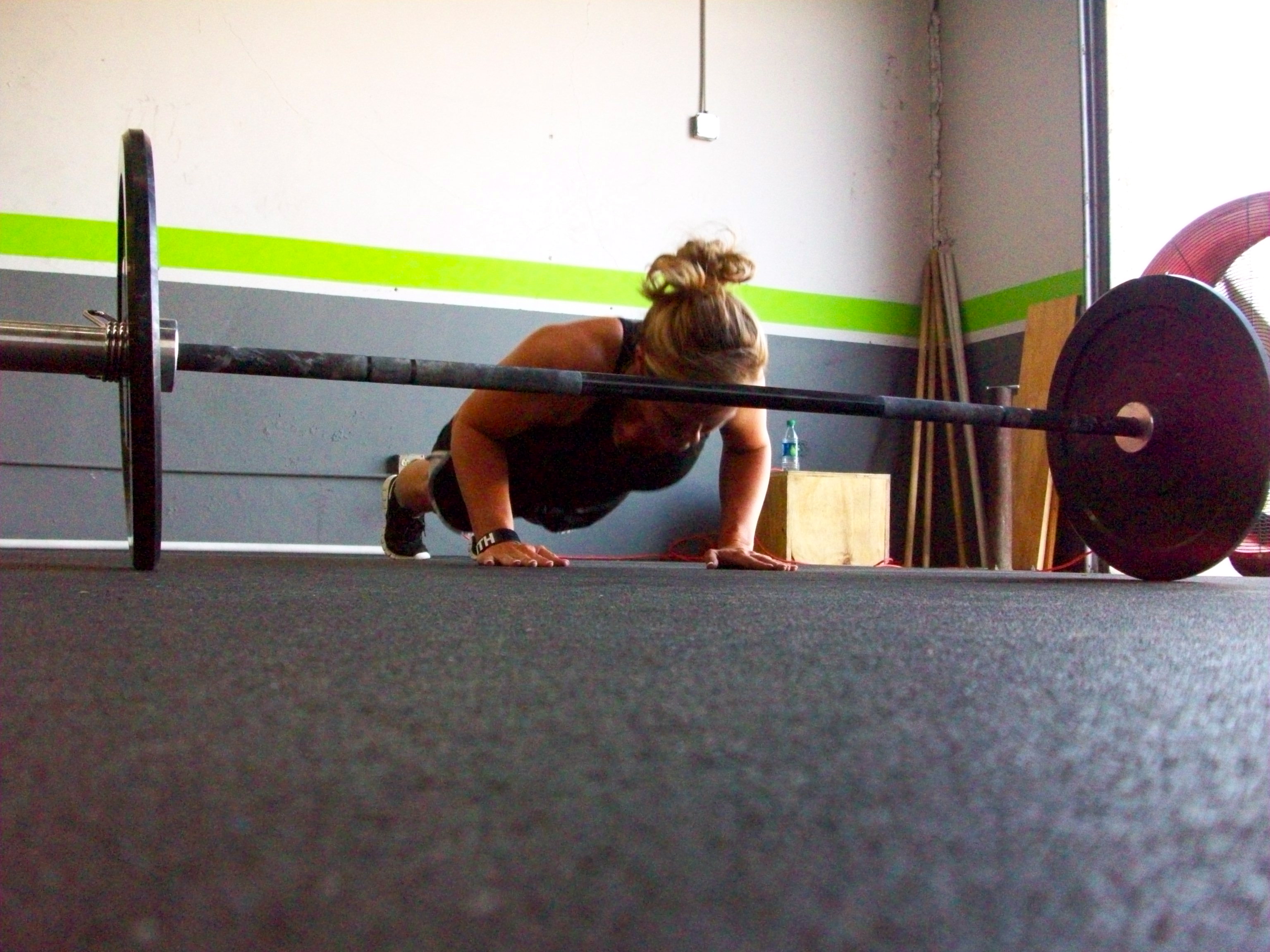
The first pull of the snatch.

The second and third pulls of the snatch.
Why Olympic Lift?
Written by David Miller of CrossFit Invictus
Why be strong, why workout? To be fit, healthy…maximize one’s quality of living, maybe. There are so many exercise choices to get your muscular, cardio-vascular and skeletal systems moving, so why snatch or clean & jerk?
We all agree that moving heavy weights and fatiguing our muscles causes our bodies to adapt and get stronger.
Dr. Greg Haff presented his results at the 5th Annual Coaches College last December, how directly improvements in strength positively affect speed. Still, why do we want to continue working on our strength and speed? I like being as strong and quick as possible but that’s me. Olympic lifting also offers lifters a better quality of life for more years.
As we age, the first skill we lose is speed. Quickness is second. Flexibility is third, followed by strength. I don’t even want to go through the rest of the aging list! We can retard this process however by using these magical organic machines we call our bodies.
If we were to describe ourselves as athletes, athletes in the “game” of life, how might we train our bodies to most effectively compete in the game? Physically and physiologically, we train our bodies the same as a high school, collegiate or pro athlete! Ok, maybe not the same intensity, yet the components of building strength, cardiovascular capacity, agility, speed, balance, coordination and flexibility are all necessary in every thorough training plan.
…so why Snatch or Clean/Jerk?
The Olympic Weightlifting exercises do not utilize a machine, lever, pulley or bench. Simply pick it up. Put it down. Repeat. The lifts are “whole-body” oriented, requiring strength from the inside out and being strong from the “core.” The lifts are performed by maintaining strong posture throughout the core while pushing with the legs to jump the barbell into the air and support it overhead. The difference between humans and other animals on this planet is that we walk upright. In everything we do, i.e. sports, chores around the house, wrestling with the kids, work, etc…90% of our time is spent balancing ourselves through our feet, resisting the forces of gravity and moving things around. The postures our bodies learn practicing the Olympic Lifts carry over to everything we do in our regular daily living. Functional training!
Collegiate athletics and the CrossFit communities are currently our biggest advocates of the lifts. Since the force we use to elevate the barbell is resisted by gravity, we must drive down with what?? – OUR FEET! Our hands are the connection to the barbell. Our feet drive down thru the floor, against gravity. That large section of our bodies between hands and feet , our core, is the link between the barbell remaining on the platform or being successfully hoisted overhead. Lifters maintain a ridged, neutral spine (torso), drive the feet through the earth and jump the weight into the air. This jump is the most powerfully explosive movement our bodies can produce. It’s all about coordination of leg and hip extensors. Everyday, all day, when we use our bodies to pick things up, walk, climb, run, sit, and get up, we are accomplishing these movements with our core and legs. Being stronger will not only help us when we’re older with regular daily living activities (RDLAs), but also make RDLAs easier today, too!
The clean & jerk is considered the KING of all weight related exercises. The strength, power, coordination, balance and flexibility to pull a heavy barbell off the floor only to receive it on your throat supported by your shoulders at the bottom of a deep front squat, STAND, then take a breath and jerk this weight over your head is, well . . . somewhat athletic. This one exercise more than any other, utilizes the most from our bodies. It requires every muscle in the entire body not to mention a little mental focus. Practicing the clean & jerk with use of proper technique, will in time improve posture & core strength. Plus, a little extra practice with the ol’ mind-body connection is a nice bonus.








